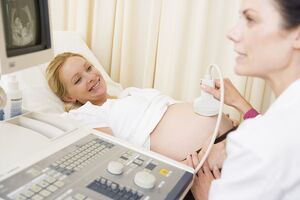Sudden death during pregnancy, during & after the delivery
Death can occur during pregnancy or in connection with termination of pregnancy.
Termination of pregnancy can only be carried out in a medical facility by a doctor using recognised medical procedures. The woman must give consent to terminate the pregnancy. Under 16 years of age, parental consent is required for abortion. An abortion is a procedure in which a pregnancy is artificially terminated. Its performance is regulated by law in each country. In our country, a woman who requests it can terminate her pregnancy up to 12 weeks without medical indication or for medical reasons if the life or health of the woman or the healthy development of the foetus is at risk or if the foetus is genetically defective. For medical reasons, the pregnancy may be terminated no later than 24 weeks' gestation. Any other method is prohibited and punishable.
Until the 8th week of pregnancy, it is possible to terminate the pregnancy by a medical method in which the woman is given abortive drugs. Since 2014, the so-called abortion pill has been available in the Czech Republic, which can be used until the 49th day after the last menstrual period.
In the past, when abortion was banned, pregnancies were often terminated in a variety of ways. Various chemical substances were used, herbal extracts were drunk, lavages were made, the amniotic sac was punctured or the cervix was mechanically dilated. In the past, women died most often from sepsis, haemorrhage or amniotic fluid embolism.
Distribution of deaths[edit | edit source]
- the death is directly related to ongoing pregnancy or childbirth
- deaths from diseases whose course is significantly affected by pregnancy or childbirth
- deaths where there is no connection with pregnancy or childbirth (for example, death of a pregnant woman as a result of an accident)
Maternal mortality (death rate) refers to the total number of deaths of women during pregnancy, childbirth and up to day 42 of childbirth per 100 000 live births.
The most common causes of death:
- obstetric haemorrhage – 20%
- embolic causes – 20%
- cardiovascular complications – 15%
- accidental deaths – 15%
In recent years, the proportion of embolic causes has been increasing; hemorrhages are now more amenable to medical management. The prevention of maternal mortality is knowledge of the prenatal care system and its wide availability and ability to deal with acute conditions arising at birth.


